123 games with untapped franchise potential
The best games that never got the sequels they deserve

Store shelves are littered with sequels to crappy games and franchises that have no right to exist. Hello, Dynasty Warriors! What Faustian covenant keeps you alive?? Meanwhile, videogame history is teeming with amazing, innovative titles that were mercilessly trampled underfoot when the balance sheet didn’t add up. This is our ode to games with unrealized franchise potential.
Some of the games on this list are no-brainers, others are diamonds in the rough. Yet others may have had sequels only in Japan, or have been out of circulation since the 16-bit era. Whatever their backstory, we’re picking them up and dusting them off in hopes that whoever owns the rights will heed our call and get cracking on follow-ups.
1. Primal Rage
Arcade, PSone, 3DO Interactive Multiplayer, Sega 32X, Atari Jaguar CD, Sega Saturn, Amiga, Mega Drive/Genesis, SNES, Sega Game Gear, Game Boy and PC CD-ROM (Atari, 1994)
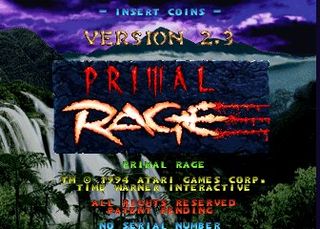
This gore-drenched 2D fighter featured a cast of ferocious postapocalyptic monsters divided into two camps, Virtuous and Destructive. Work on Primal Rage 2, which was to feature a ginormous dragon-skeleton beastie named Necrosan, was cancelled by Atari in 1995. However, the plot was kept alive in the form of the novel Primal Rage: The Avatars. Books are great and all, but what we really want is a proper videogame sequel brimming with high-definition dino-gods and ape-beasts ripping the shit out of each other for the fate of mankind.
2. Base Wars
NES (Ultra Games/Konami, 1991)
Sign up to the GamesRadar+ Newsletter
Weekly digests, tales from the communities you love, and more
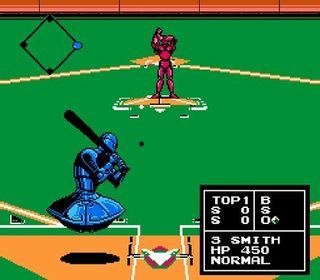
This falls in the same territory as Primal Rage – why did it take game devs decades to come up with this super-basic, supremely awesome concept, and why the hell isn’t it an annual fixture? We already see seven or eight thousand sports games a year, most of which only appeal to a very specific audience. Killer Robot Baseball, on the other hand, is an idea any red-blooded American can get behind. Want to steal second? Hover on over there and beat the bolts out of that stupid tank-treaded baseman and take it by force. Don’t like your pitcher? Shred him down and buy a new one. Add in season play, a build-a-bot warehouse for drafting and a couple of new player designs and we’d be the first to step back up to the plate.
3. Jade Empire
PC, Xbox (Microsoft Game Studios/BioWare, 2005)
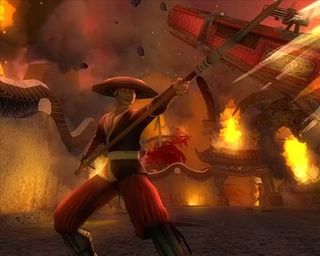
Since 2005, BioWare has been talking about the possibility of a Jade Empire sequel. And back in January of 2008, a shadowy rumor leaked onto the interwebs that code for Jade Empire 2 “exists.” The original game had all the trappings of franchise material with engrossing characters, magnificent settings, and a unique take on martial arts-fueled RPG combat. But until hard evidence of a sequel’s existence materializes, we’ll continue yearning for BioWare’s one-off hit to attain franchise status.
4. Ring of Red
PlayStation 2 (Konami, 2001)
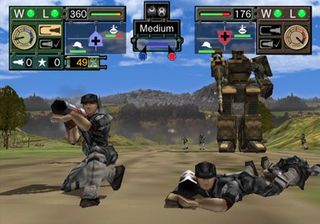
It wasn’t hard to stand out in the early days of the PS2. Most of the launch-window titles were lackluster, PSone-caliber games with moderately improved visuals. By mid-2001 though, Ring of Red was able to not just distance itself from the other “me too” games of the day, but also cement its place as one of the system’s most unique and tense strategy RPGs.
What was so special about this long-forgotten one-off? Mechs. But not the typical mechs you see in countless games – they’re mechs as they might appear if they were actually built and deployed in real-world battles. They’re huge and unwieldy, loud as hell and powered by noisy, smoke-churning engines. They take forever to set up one shot, have to brace before each blast and need a whole team of people to repair and rearm in between rounds. But, they come in so many shapes and sizes, and have so many different attributes that you start to get an idea of just how difficult and impractical mech battles would be.
Above: The intro, which places mechs in real combat footage in an attempt to further sell the idea
Rude awakenings aside, it was intensely fun to play, primarily because of the time invested in each shot fired. Every shell mattered and your support teams needed to be on point and chosen carefully. Nothing like this at the time, and nothing since. This idea, set in an alternate 1960s, could support plenty of games, just as Final Fantasy Tactics and Disgaea have done for years.
5. Full Throttle
PC, Mac (LucasArts, 1995)
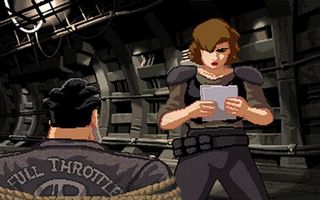
Its good-guy rebel attitude seems a little quaint in today’s post-Grand Theft Auto market, but Full Throttle’s smart, beautifully animated biker adventure is still loved by legions of adventure-game fans. Unlike most of the other games on this list, Full Throttle actually had two well-publicized sequels in the works, both of which were canned amid concerns over quality and internal disagreements at LucasArts. But hey, Sam and Max got sequels, so there’s no reason to write barrel-chested Ben and his Polecats gang off completely.
6. Samurai Western
PS2 (Atlus/Acquire, 2005)
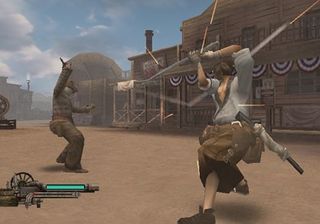
The idea of a bullet-slicing samurai set loose in the Wild West is one with seemingly boundless potential, but the mediocre Samurai Western used it to create a blandly goofy hack-and-slasher. Still, there’s a lot of promise behind the concept, and plenty of franchises have bounced back after crappy first installments (Street Fighter, to name one). We’d love to see a reimagined and expanded East-meets-Wild West story on current-gen systems – just make it better than Afro Samurai, huh?
7. Cubivore: Survival of the Fittest
GameCube (Atlus U.S.A./Saru Brunei, 2002)

Above: Cubivores cavorting in double-happy rainbowland. Image courtesy ofMobyGames
Known enigmatically as “Animal Leader” in Japan, Cubivore fell prey to a public that was caught totally unprepared for its sheer quirkiness. Think Spore done the art style of Katamari Damacy. As your cute little cube creature rips the limbs off its opponents and devours them, it mutates and passes new traits on to its offspring. Eventually, you evolve a creature strong enough to destroy the Killer Cubivore. Now that franchises like Katamari have paved the way for mainstream acceptance of eccentric games with peculiar art styles and amazing soundtracks, we hope Atlus will give Cubivore another shot.
8. Shadow of the Colossus
PS2 (SCE/Team ICO, 2005)
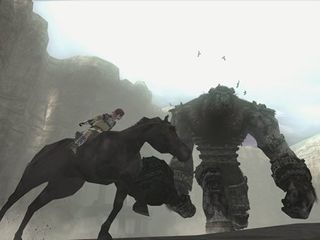
Above: Stupidly good
ICO and its spiritual successor, Shadow of the Colossus, are two of the most unique and impressive games ever designed. Fumito Ueda and Team ICO brilliantly pair artsy experimentation with sturdy gameplay and obscene elegance, creating experiences which are both intelligent and fun.
While probably compromising their vision, they could have released ICO 2, and Shadow of the Colossus 2, and 3, and 4, and we probably would have loved them all. Instead, they’re taking the slow, steady, do-it-once-and-do-it-right approach. In this case, we’re glad they haven’t sucked the veins of their previous successes dry. They’ve instead opted to let their masterpieces stand alone but near each other so that they can move on to new things (note to almost every other developer: try this once in a while), and we’re damned excited to see what’s coming next (Ueda has said that their unnamed, upcoming PS3 game is “rather close to ‘Ico’”). So does this approach constitute a franchise? We’ll let you argue it out in the comments.
9. Jet Force Gemini
Nintendo 64 (Rare, 1999)
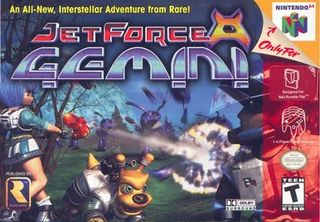
In between making clones of Super Mario 64, Rare managed to pump out this action-packed shooter that was shockingly ahead of its time. Loaded with beheadings and dismemberment, a co-op story and four-player versus modes, Gemini was indeed supposed to be a big damn deal. It sort of was critically, but we’re guessing the sales weren’t there to justify another entry. Too bad, cuz Nintendo could always use more edgy titles to balance out their first-party lineup. Instead, Rare opted to craft Banjo Tooie, Star Fox Adventures and then jump ship for Xbox and Grabbed by the Ghoulies.
10. God Hand
PS2 (Capcom/Clover Studio, 2006)
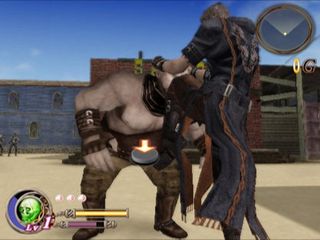
At turns surreal and insouciant, God Hand’s stylistic influence can be seen in more recent games like No More Heroes and MadWorld. The irreverent beat-em-up was the last game released by the much-underappreciated Clover Studio (OKAMIIIIIIIIIIII!) so a franchise is exceptionally unlikely. But we can dream of a world where originality is rewarded, right?
11. Geist
GameCube (Nintendo/n-space, 2005)
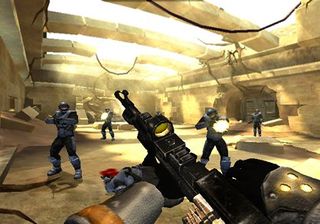
Check out the logline: A dead body searches for its body and possesses others in the process, while taking down an evil corporation. Hell yeah, this FPS deserves a sequel. So maybe possessing a dog’s food bowl wasn’t all that exciting. But think about a newer, revamped game with new things to possess. We don’t give a shit about the story. Hell, maybe it’s another dude who’s looking for his body. Just think of the emergent gameplay concepts you could fit into a possession game. The first Geist was okay, but a second one could knock it out of the park.
12. Downhill Domination
PS2 (SCEA/Incog, 2003)
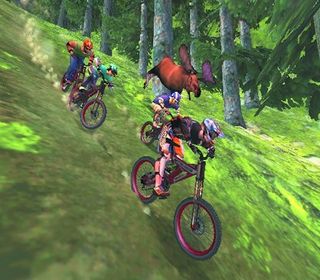
Though it reviewed fairly well, this combat-fueled thrillcoaster (think Road Rash with mountain bikes) never quite found an audience. The fickle public missed out on Downhill Domination’s amazing tracks, tricks and customization options. DD also had an addictive multiplayer mode that would play fantastically on our modern networked consoles.
13. Mario Paint
SNES (Nintendo, 1992)
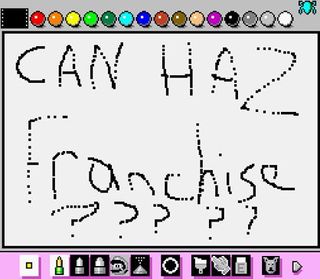
Nintendo Photoshop. That’s what we could be playing if Mario Paint had continued beyond its original release. In just one game they crammed a paint program, sprite creation, basic animation tools, slideshows, minigames and a seriously impressive music studio that’s since been converted for web use. Semi-sequels have seen the light of day in Japan, but nothing substantial has surfaced even in this modern era of Nintendo trying to appeal to every living thing with disposable income.
Above: Rickrolling with Mario Paint’s updated music composer
The kneejerk reaction here is to put it on Wii, touting the Wii Remote as a digital pen that lets users draw freehand, plus the usual Mario Paint extras. Not a bad idea, but we’d rather see it on DS, as the stylus/touch screen combo, along with the new camera and SD card support for music, make it the natural home for one of Nintendo’s most creative products.
14. Okami
PS2, Wii (Capcom, 2006/2008)
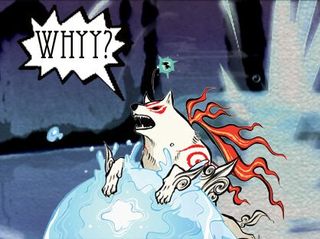
We’re getting pretty damn sick telling you why Okami is worth playing. We could tell you about its rich and emotional storyline or how beautiful the cel-shaded graphics look (especially the cherry blossoms), but instead we’ll pine for a sequel. Seriously, if Nintendo can make the same Zelda game every few years, then why can’t Capcom release Okami 2? Think of how gorgeous the game would look in high-definition. Those of you who beat the game (kudos!) know that Waka and Ammy aren’t heading back to the Celestial Plane on that ship. No way! They’re looking for more adventures and more demons to fight. Just get with the development already.
15. Oni
PS2, PC (Bungie/Rockstar, 2001)
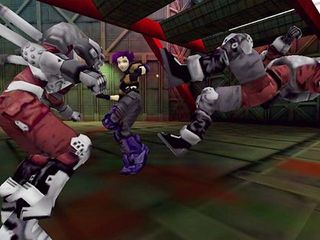
Bungie’s anime-styled beat ‘em up/shooter won much acclaim for its deep combat system, cyberpunky heroine and dystopian storyline. Its characters and setting were loosely based on the manga/anime megahit Ghost in the Shell, but it was not officially connected to that franchise. At least Bungie has some good B material in its pocket for the day when people stop playing Halo.
16. Kinetica
PS2 (SCEA/SCEA, 2001)
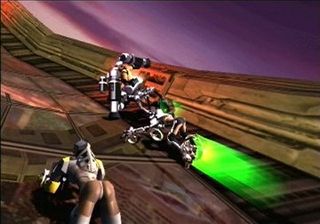
Sexy ladies fused with motorcycle exoskeletons hauling ass through a streaky neon Wipeout clone? How are there not 3 or 4 more of these? Unfortunately, it received moving violations for lackluster multiplayer and limited track selection. A PS3 facelift could easily address these issues while further exploring the curiously compelling world of lightning-fast lady-bikes.
17. Psychonauts
Xbox, PS2, PC, XBL (Majesco/Double Fine, 2005)
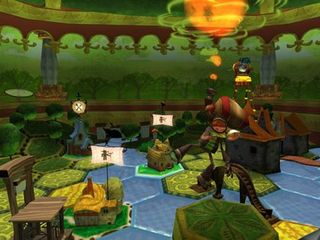
A young psychic cadet named Raz is out to save his summer camp for the mentally gifted in this surreal adventure by exploring the delightfully twisted subconscious minds of his camp counselors, camp fish and other camp-adjacent weirdos. Raz uses his gifts to enter the Godzilla-based mind of the giant Lungfish terrorizing the campers, go deep into the Napoleonic boardgame world of an insane asylum inmate and infiltrate the ultra-paranoid faux-idyllic 50’sMilkman Conspiracy(ourfavorite), to name a few of the psyched out psyches he visits. There just aren’t enough games with psychic heroes going inside abnormal minds these days. In fact, there aren’t any games that showcase creative storytelling and areas as well as Psychonauts, which is why this game deserved a sequel – we’re tired of playing the “ice world,” “fire world” and “cookie-cutter themed area worlds” over and over again.
18. PN 03
GameCube (2003)
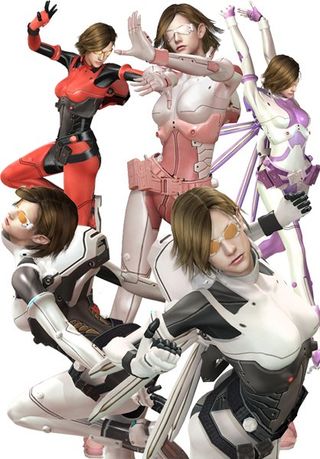
We’ve brought Vanessa Schneider up before, and we’ll keep doing it until someone at Capcom realizes the inherent franchise potential in a game like PN 03. It stars a gyrating bounty hunter that swivels her hips and prances around while blasting the shit out of robots. That’s just plain awesome, even if the gameplay itself was a bit on the repetitive and sterile side. The dirty, worn universe contrasted beautifully with the stark white-on-white interior settings, the music was ace and the heroine, once again, is hot enough we played the game over and over just to unlock her many costumes. Here’s a case where the idea, character and gimmick work great, but they’re smashed into a sucky game. Give ‘em a new one and watch this star rise.
19. Black
PS2, Xbox (EA/Criterion Games, 2006)
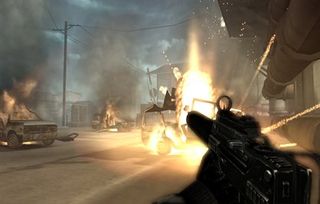
Black’s high production values and uber-realistic weapons made for a solid FPS experience. Coming at the end of the last console cycle, it showed just how much power could be squeezed out of last-gen consoles. If Criterion wants to turn it into a lasting franchise, however, they’ll have to put some time in on story and character development. Last December, Criterion Games published, then immediately took down, a job posting forBlack: Second Mission, claiming it was due out in 2009 for PS3, 360 and PC. Since the post was taken down, we’ve heard nothing. Was this a purposeful blunder to gauge audience interest in a sequel, an honest to goodness mistake or did they just hire a staff in record time?
20. Giants: Citizen Kabuto
PS2, PC (Interplay/Planet Moon Studios, 2000)
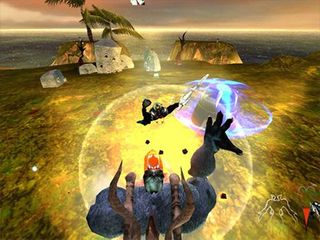
Usually, games that attempt to combine this many disparate genres and styles just turn into a mess of half-realized ideas and frustrating gameplay. Giants: Citizen Kabuto pulls off the seemingly impossible: an action/shooter/RTS with an offbeat sense of humor, engaging characters and a vibrant world to explore. Each of the three playable races, Meccs, Reapers or the massive Kabuto, represent technology, magic and brute force respectively and provide wildly different gameplay experiences. Giants: Citizen Kabuto is truly a triumph of creativity and originality. By all rights, this game should not exist. But since it does, can we have another, please?
GamesRadar+ was first founded in 1999, and since then has been dedicated to delivering video game-related news, reviews, previews, features, and more. Since late 2014, the website has been the online home of Total Film, SFX, Edge, and PLAY magazines, with comics site Newsarama joining the fold in 2020. Our aim as the global GamesRadar Staff team is to take you closer to the games, movies, TV shows, and comics that you love. We want to upgrade your downtime, and help you make the most of your time, money, and skills. We always aim to entertain, inform, and inspire through our mix of content - which includes news, reviews, features, tips, buying guides, and videos.
Most Popular



